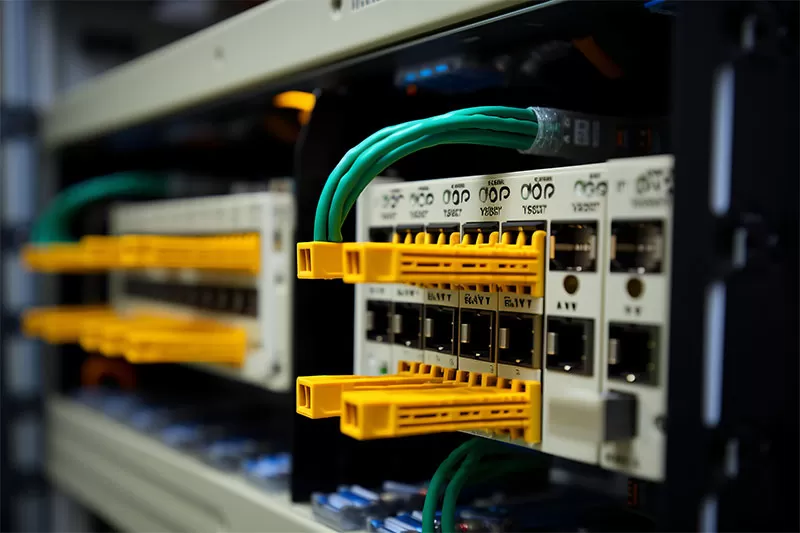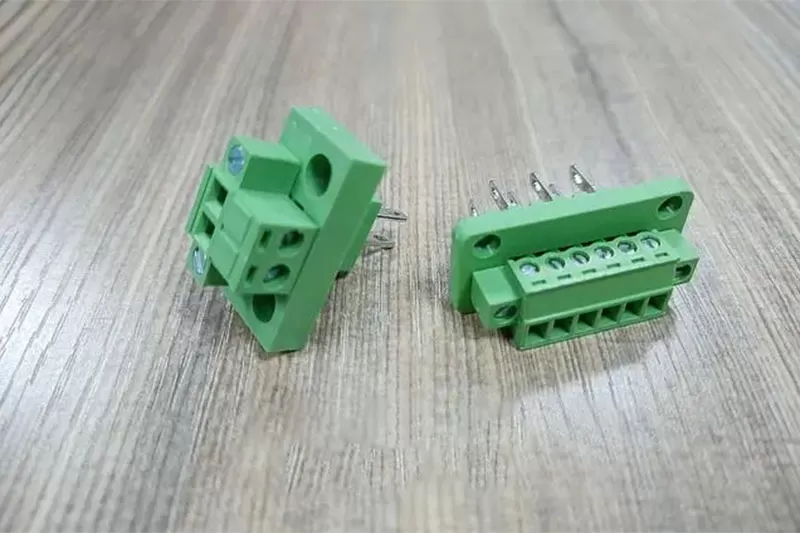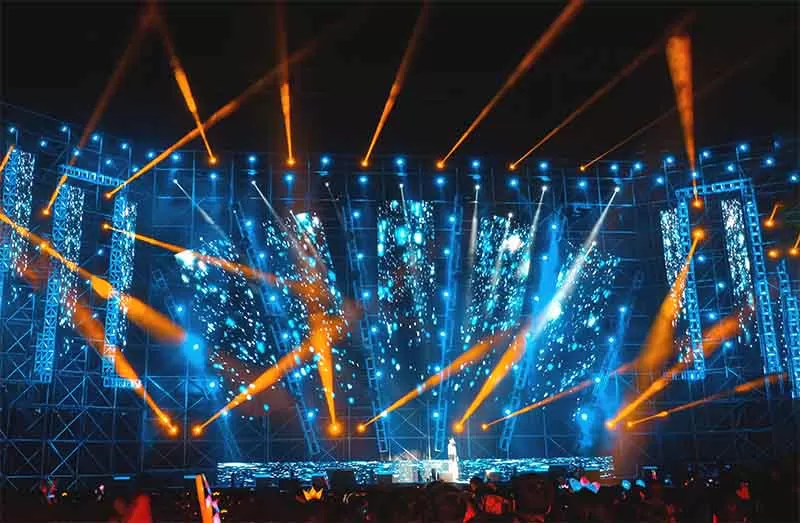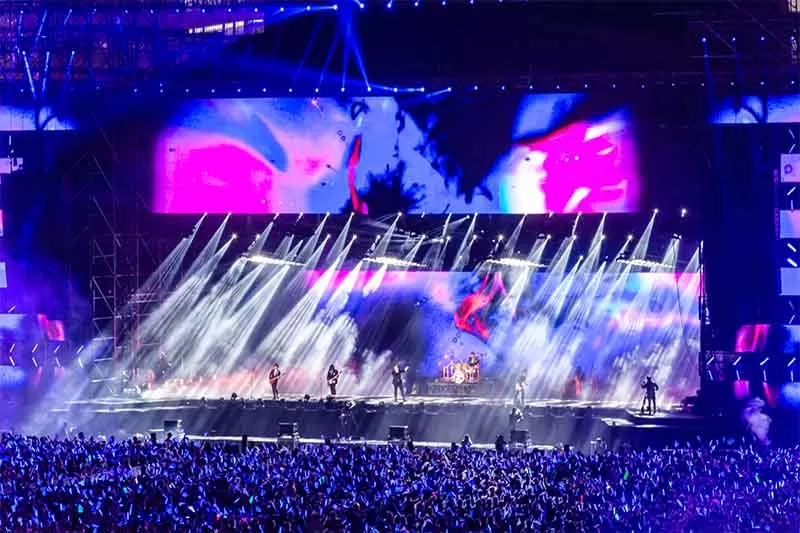The interactive flat panel is an intelligent device that integrates multimedia display, touch interaction, video conferencing, electronic whiteboard and other functions. It can be widely used in education, enterprises, government and other fields to improve the efficiency and quality of conferences and teaching.

With the continuous development of modern technology, high-definition video signal transmission products have become an indispensable part of our lives.
These common high-definition video signal transmission products include HDMI, DVI, SDI, VGA, etc.
Understanding the respective capabilities of these technologies for audiovisual content is critical to choosing the technology that is best suited for your content.
if u have any questions, just contract us, tell us about your project.

What is SDI? What is HDMI?
The full name of SDI is Serial Digital Interface (Serial Digital Interface), which is a technology specially used for high-definition video transmission.
It is mainly used in professional fields such as broadcasting and film.
Compared to HDMI and DVI, SDI has a longer transmission distance and is more stable, and it can support video resolutions up to 1080p.
In addition, SDI can also use different transmission cables. Coaxial cable is more common and can be up to 100 meters away.
HDMI is the acronym for High-Definition Multimedia Interface.
It is a video standard used to transmit uncompressed video and embedded audio signals to any device capable of displaying or encoding video.
HDMI is widely used in consumer and prosumer environments. It is a popular connection cable because it is compatible with consumer and professional equipment.
However, it is limited in length, with a maximum of 30 feet. For longer distances, you will need a booster.
What are the advantages of the SDI interface over the HDMI interface?
SDI transmission is more stable than HDMI
Choose the standard transmission method (SDI signal) in the radio and television industry.
The self-locking design of the SDI interface is more stable and reliable, not easy to fall off, and will not cause signal interruption due to human factors, which is very important for live broadcast events.
SDI has a longer transmission distance than HDMI
The serial interface refers to the sequential transmission of bit-by-bit data. It is characterised by simple communication lines.
As long as a pair of transmission lines can achieve two-way communication, it is particularly suitable for long-distance communication.
Theoretically, the transmission distance of SDI can reach 100m, while the transmission distance of HDMI is usually within 30m.
SDI is cheaper than HDMI
SDI costs less than HDMI! Therefore, from the perspective of the particularity of live broadcast, using the SDI interface is still more stable and reliable.
The difference between SDI and HDMI:
The interfaces are different:
HDMI is a fully digital video and sound transmission interface that can send uncompressed audio and video signals.
SDI is a high-definition digital component serial interface. HD-SDI is a real-time uncompressed high-definition broadcast-grade camera.
The principles are different:
HDMI supports uncompressed 8-channel digital audio transmission, as well as any compressed audio stream such as Dolby Digital or DTS, and also supports the 8-channel 1-bit DSD signal used by SACD.
SDI is a high-definition real-time transmission of uncompressed digital video over a 75-ohm coaxial cable based on the SMPTE (Society of Motion Picture and Television Engineers) serial link standard.

Different characteristics:
Both HDMI and UDI without the audio transmission function inherit DVI's core technology "Transmission Minimized Differential Signal" TMDS, which is still essentially an extension of DVI. SDI.
Unlike IP surveillance, which compresses and packages video signals and then transmits them through the network.
It uses uncompressed digital signals to transmit at high speed on coaxial cables, and the original image will not be distorted.
What are the advantages of the SDI interface over the HDMI interface?
SDI transmission is more stable than HDMI
Choose the standard transmission method (SDI signal) in the radio and television industry.
The self-locking design of the SDI interface is more stable and reliable, not easy to fall off, and will not cause signal interruption due to human factors, which is very important for live broadcast events.
SDI has a longer transmission distance than HDMI
The serial interface refers to the sequential transmission of bit-by-bit data. It is characterised by simple communication lines.
As long as a pair of transmission lines can achieve two-way communication, it is particularly suitable for long-distance communication.
Theoretically, the transmission distance of SDI can reach 100m, while the transmission distance of HDMI is usually within 30m.
SDI is cheaper than HDMI
The price of a 20-meter HDMI interface is between 400-600 yuan. Based on this measurement, SDI estimates the bankruptcy to be several hundred meters.
It only costs a few yuan per meter, and 200 meters is even less than 1,000 yuan. Therefore, SDI costs less than HDMI!
Therefore, from the perspective of the particularity of live broadcast, using the SDI interface is still more stable and reliable.
Advantages of SDI:
High-Quality Video:
SDI can transmit high-quality video signals up to 4K resolution without any quality loss.
Stability:
SDI is a dedicated hardware-based technology that provides stability and reliability of signal transmission.
Low Latency:
SDI offers low latency transmission, which is important for live events where time is of the essence.
Compatibility:
SDI is a widely adopted industry standard, which means it is compatible with a wide range of devices and software.
Long-distance transmission:
SDI can transmit signals over long distances, up to hundreds of meters, without any loss of quality.
Final thought
SDI and HDMI cater to varying audio-visual needs, and the right choice hinges on your specific AV integration.
SDI is often the preferred choice for professional applications, whether in broadcasting or for streaming business meetings due to its ability to connect to a broad range of sources while transmitting signals.

The Phoenix terminal block is an interface part of electrical appliances. It can be mainly divided into signal terminals, power terminals, and connection terminals.
It is a connection port in the circuit and is widely used in various fields. if you have any project that needs to help,just contract us, tell us about your project!

What is the Phoenix terminal interface?
Phoenix terminal interface is an audio and video signal transmission interface, which is widely used in the connection between audio and video equipment.
It usually adopts the form of a BNC interface and has excellent signal transmission quality and stability.
Phoenix terminal interface is suitable for connecting various audio and video equipment, such as cameras, monitors, video recorders, etc. Through the Phoenix terminal interface, clear video signals can be transmitted and high-quality audio output can be provided.
It is simple to use, easy to plug and unplug, and is widely used in security monitoring, TV station production, film and television transmission and other fields.
The Phoenix terminal interface is small in size and easy to plug in, which can effectively save space and improve wiring flexibility.
It can also ensure communication quality and network bandwidth.
Its application fields include radio and television, electric power, energy, railway, medical care, intelligent building and other industries.
In addition, the Phoenix terminal interface also has important features such as pluggability, interchangeability and maintainability, which further enhances the flexibility and reliability of its application.
Application of Phoenix terminal interface in optical fibre communication
Phoenix terminal interfaces are widely used in optical fibre communications, mainly including:
Optical cable connection:
The Phoenix terminal interface is one of the main ways to connect optical cables and equipment. In optical fibre communication systems, communication optical cables are frequently connected and plugged in. Different types of optical cables require different types of interfaces. The Phoenix terminal interface can support the connection of a variety of optical cables, so it is widely used.
Communication equipment connection:
Phoenix terminal interface is also widely used for permanent connection of communication equipment, such as user terminals, communication switches, routers, optical terminals and other equipment.
The connections between these devices are transmitted through optical cables, and the Phoenix terminal interface can Achieve fast and stable connections.
Optical fibre terminal equipment connection:
The Phoenix terminal interface is also widely used in the connection of optical fibre terminal equipment, such as optical fibre transceiver modules, optical amplifiers, optical switches, etc.
These devices have very high requirements for connection quality, and the Phoenix terminal interface can provide high-precision connections and long-term stable performance.
Comparison between Phoenix terminal interface and other communication interfaces

Compared with other communication interfaces, the Phoenix terminal interface has the following characteristics:
Miniaturization:
The Phoenix terminal interface has a smaller overall size and can complete effective wiring in a limited space without placing a burden on existing equipment.
Stability:
The Phoenix terminal interface can provide long-term stable connection performance, is not affected by the environment, and is not easily affected by vibration, temperature and other factors.
Reliability:
The Phoenix terminal interface has the characteristics of high reliability and long life, which can ensure the stability of communication quality and network bandwidth, and improve the reliability and security of the communication network.
Final thought
Phoenix terminal interface has the characteristics of miniaturization, stability, reliability, etc., and is widely used in fields such as optical cable connection, communication equipment connection, and optical fibre terminal equipment connection. Compared with other communication interfaces, the Phoenix terminal interface has superior performance characteristics and is expected to become one of the important trends in future communication development.

With the rapid development of the quick service catering industry, to better attract customers, enhance brand image, and provide a more efficient service experience, LCD advertising machines play an important role in this industry.
This article will explore the role of LCD advertising machines in the catering industry and introduce their functions and advantages in detail. if u have question ,just free to contract us, tell us about your project.
Purpose:
Advertising machines use the latest technology to effectively create the most perfect message communication even without verbal transmission.
Advertising machines have become the most effective communication media platform on the market today. Users can not only effectively convey messages to employees, customers or various branches through the rich and diverse advertising machine information platform, but it is one of the best communication tools between enterprises and customers.
The screen of the advertising machine can be set up in places where employees, parents, and students frequently come and go, such as building entrances and exits, elevator entrances, main aisles, pantries, restrooms, lounges, etc.
When electronic signage is combined with the cloud management system, it breaks through the previous electronic signage function that could only use simple pictures and videos to transmit messages and further display time, RSS instant news, web pages and other information.
What’s even more amazing is that if the electronic signage is equipped with a touch function, it can also display a navigation function, which can not only provide more diverse information but also achieve interactive effects!

Compared with traditional static billboards or bulletin boards, advertising machines can display dynamic and real-time multimedia audio and video content such as live news, YouTube live broadcasts or real-time images, etc., and are no longer limited to static text, pictures or simple video carousels.
Whether it is marketing advertisements, information announcements, education promotions, or leisure and entertainment, we can carry out the most precise marketing according to the needs of each specific customer group.
The advertising machine is the best information dissemination media platform currently on the market, and it is also the best precision marketing expert based on local conditions.
Advantages of catering splicing integrated advertising machine
Eye-catching advertising display:
The high-definition display screen of the advertising machine can display exquisite pictures and attractive videos, making the restaurant's promotion more attractive. This helps to increase customer interest and increase their desire to dine at the restaurant.
Real-time updates and flexibility:
Unlike traditional advertising, advertising machines can update advertising content in real-time. Restaurants can flexibly change advertising content according to different periods and promotions to ensure that the message is fresh and effectively conveyed.
Interactivity and personalization:
Some catering-integrated advertising machines have touchscreen functions, allowing customers to interact with advertisements. This interactivity enables a personalized experience, such as viewing a menu, reserving a table, or learning about special offers.
Save printing costs:
Traditional publicity requires printing posters, menus and flyers. These costs can be saved by using advertising machines. Additionally, using less paper is also more environmentally friendly.
Statistics and analysis:
Advertising machines usually have statistics and analysis functions, which can track the effect of advertising playback, including the number of views, interaction rate and other data. This helps restaurants understand the impact of advertising and further optimize their promotion strategies.

Application of digital signage in restaurant stores
Promotional display
Promotion is an effective means of driving sales. Customers are enthusiastic about new products and offers, but making sure they know a promotion exists is crucial. Digital menu advertising machines can vividly present promotional information through engaging images and dynamic displays to stimulate customer interest and thereby increase sales.
Recommendations for best-selling products and special offers
Further, promote customer-favourite dishes with digital menu displays that highlight top-selling items and daily specials. Not only does this highlight customer-favourite options, but it also allows restaurants to draw more attention to their specials.
New product promotion
Restaurant operations need to maintain a sense of freshness at all times, and launching new products is the best way to attract customers. Digital menu advertising machines can arouse customers' curiosity through vivid images and attractive displays, making them willing to try new products and boost sales.
Guiding customers to increase consumption
Upselling is a key strategy in the restaurant business. Digital menu advertising machines can increase sales per transaction by encouraging customers to choose slightly more expensive but more valuable items through smart design and eye-catching presentation.
Explore the innovative world of iSEMC advertising machines, designed to create engaging visual experiences.
Our advertising machine products use the most advanced display technology to provide clear and vivid image quality, ensuring that your advertising content is more attractive.
These advertising machines are ideal for promoting brands and messages.
Final Thoughts:
LCD advertising machines are not just a trend but a transformative element in the catering industry.
They represent a fusion of technology and marketing, opening new avenues for customer engagement, operational efficiency, and environmental responsibility.
As we move forward, it's exciting to think about the possibilities that lie ahead in this digital revolution of the catering industry.
As society continues to evolve, the frequency and importance of information exchange and communication have markedly increased.





